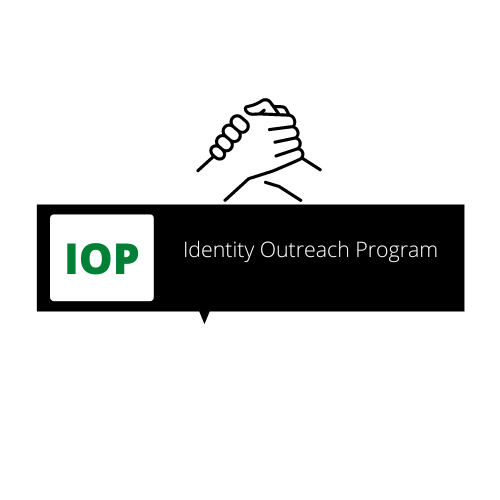Providing Vital Support for Vulnerable Youth
- JASMINE TUCKER
- Jun 26
- 4 min read
Vulnerable youth often face a myriad of challenges that can hinder their development and well-being. The term “vulnerable youth” encompasses young people who are at greater risk of experiencing negative outcomes due to various factors such as socio-economic status, family instability, abuse, neglect, or lack of access to education and healthcare. To support these young individuals, communities and organizations have created robust programs that cater specifically to their needs. This blog post delves into the significance of providing vital support for vulnerable youth and outlines effective programs and strategies available today.
Understanding Vulnerable Youth
Vulnerable youth can come from diverse backgrounds, but they often share common experiences that contribute to their challenges. Factors such as poverty, homelessness, involvement in the juvenile justice system, and lack of supportive relationships can leave these youths at a disadvantage. According to the National Center for Children in Poverty, about 1 in 5 children in the United States live in families with incomes below the federal poverty level. This statistic underscores the widespread nature of the issue and calls for urgent measures to provide resources and support to these young individuals.

Community support plays a crucial role in fostering resilience and empowerment. Programs aimed at strengthening the lives of vulnerable youth often focus on creating safe spaces for self-expression, providing mentorship, and offering educational opportunities. These elements work together to nurture personal growth and help youths navigate their unique challenges.
Importance of Supporting Vulnerable Youth
Supporting vulnerable youth is not just a moral obligation; it has far-reaching implications for society as a whole. Research shows that when at-risk young people engage with community resources and receive targeted interventions, they are more likely to become productive adults. A study by the Annie E. Casey Foundation found that youth who participate in support programs exhibit better academic performance, improved mental health, and decreased involvement in criminal activities.
Moreover, investing in youth support programs can lead to significant savings in social services down the line. For every dollar spent on effective youth programs, communities can save between $2 to $7 in future costs—related to healthcare, criminal justice, and reliance on public assistance. This economic perspective further emphasizes the importance of providing resources and support aimed at improving the lives of vulnerable youth.

What Qualifies as an At-Risk Youth?
At-risk youth typically refer to those individuals who are more likely to encounter negative life outcomes than their peers. Factors contributing to youth being classified as at-risk include:
Social Environment: Youth living in neighborhoods with high crime rates or low socio-economic status may face higher incidences of violence and instability.
Educational Challenges: Poor academic performance, school dropouts, and lack of access to quality education can significantly hinder a young person’s prospects.
Family Dynamics: Youth from single-parent households, families dealing with substance abuse, or those experiencing domestic violence are often classified as at-risk.
Mental Health Issues: Young people struggling with mental health disorders without access to adequate resources may also fall into this category.
These factors compound each other, making it crucial to identify and intervene early to prevent long-term consequences. Organizations that focus on vulnerable youth must address these aspects holistically to create effective intervention strategies.

Types of Support Programs for Vulnerable Youth
Different types of programs are designed to address the needs of vulnerable youth. Here are some examples:
Mentorship Programs: Pairing young people with mentors who can provide guidance and support has been shown to have a positive impact. Programs like Big Brothers Big Sisters connect youth with role models who can offer real-life advice and encouragement.
After-School Programs: These programs often provide structured activities that promote learning and skill development. Engaging in sports, arts, or academic assistance can help at-risk youth improve their self-esteem and social skills.
Counseling Services: Mental health services are vital for youth struggling with emotional or psychological issues. Access to professionals who specialize in adolescent behavior can help them navigate their challenges.
Life Skills Training: Programs that focus on teaching practical skills—such as financial literacy, communication skills, or job readiness—can prepare youth for a successful transition into adulthood.
Crisis Intervention Services: For urgent situations like homelessness or abuse, crisis intervention services offer immediate needs support. Youth in these programs receive help with housing, health care, and counseling.
By providing a combination of these programs, communities can create a safety net for vulnerable youth, helping them develop the skills and resilience they need to thrive.
How to Get Involved
If you're looking to make a difference in the lives of vulnerable youth, there are several ways you can get involved:
Volunteer: Many organizations, like those listed here, seek volunteers to help with mentoring, tutoring, or leading workshops.
Donations: Consider donating resources or funds to organizations that support at-risk youth programs. Your contributions can directly impact the services they provide.
Advocate: Raise awareness about the challenges faced by vulnerable youth within your community. Advocacy can drive policy changes that will result in improved support systems.
Engage: Attend local meetings or forums that focus on youth issues. Engaging with others who are passionate about this cause can lead to more effective initiatives.
Every action counts. If each of us takes a step toward supporting vulnerable youth, we can create a profound change in their lives.

Moving Forward Together
The path toward supporting vulnerable youth is multifaceted and requires a combined effort from individuals, organizations, and communities. By raising awareness, implementing programs, and participating actively, we can ensure these young individuals have the tools and opportunities they need to succeed.
As we move forward, let’s remember that the support we provide today will shape the lives of future generations. Investing in vulnerable youth not only benefits them personally but enriches our communities and society as a whole. The challenge is great, but the impact of our commitment can resonate for years to come.





Comments